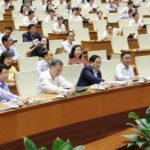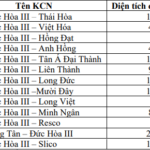Accelerating the Transition Towards a Private Sector-Led Development Model

Vietnam is embarking on one of the largest and most comprehensive reform phases in its history. Since the beginning of the year, a series of significant policy initiatives by the Politburo have been implemented. Among these, four key resolutions—Resolutions 57, 59, 66, and 68—focus on innovation, regional development, institutional reform, and private sector expansion, respectively. These resolutions form the foundation for a new strategic agenda, revolving around three priorities: private sector development, enhancing resource efficiency, and accelerating public investment.
The notable aspect lies not only in the content of the reforms but also in their implementation speed, indicating a more proactive and flexible approach to policy management. To support this reform process, the government has issued Resolutions 198 and 139 to promote private sector participation in key national infrastructure projects. Several prominent domestic conglomerates have responded positively. THACO and Vingroup have proposed investments in the North-South high-speed railway, while Hoa Phat has committed to providing infrastructure materials, and FPT focuses on developing human resources and semiconductor design capabilities. These responses signify a distinct shift in the private sector’s mindset.
Additionally, the government has adjusted its approach to economic violations, prioritizing administrative penalties and financial remedies over criminal prosecution, except for severe cases. This change is expected to improve the investment climate and enhance private sector engagement. At the project level, a comprehensive review of stalled and underutilized investments has been completed, and proposals are expected to be submitted to the Politburo and the National Assembly to address legal and procedural obstacles affecting over 2,200 projects, with a total registered capital of approximately $235 billion, covering an area of about 347,000 hectares. This figure accounts for nearly 50% of GDP and significantly hinders capital efficiency in the economy.
This reality also helps explain the persistent gap between credit growth and the expansion of the total means of payment, as most credit is allocated to projects with slow implementation or low productivity. The relevant ministries and sectors have been assigned the task of continuing to review and amend related regulations, with the expectation that legislative steps will be presented to the National Assembly at its October 2025 session and subsequently implemented in the following months.
The bottleneck hindering over $235 billion worth of projects is being addressed.
With limited room for further monetary policy easing, fiscal policy has been identified as the primary driver of economic growth in 2025. As of the end of May, the disbursement rate of public investment reached 24.1% of the yearly plan, higher than the 20.3% recorded in the same period last year. The Prime Minister has instructed the full disbursement of this year’s public investment plan, amounting to approximately $31.9 billion. The government has also expressed its readiness to mobilize additional domestic and foreign capital for large-scale projects if necessary. In such cases, the country’s public debt, government debt, and foreign debt may approach or exceed the warning threshold, estimated at around 5% of GDP.
These new policies signify a distinct shift in economic development strategy, going beyond piecemeal reforms and basic growth rates. The government is shaping a new growth model centered on private sector expansion, backed by legislative reforms and robust public investment. The aim is to achieve sustainable GDP growth rates of over 8%, surpassing the previous average of 5.5-6.5% and more closely reflecting the economy’s actual potential and capital accumulation. If approved and implemented synchronously, this reform could unlock a significant amount of underutilized capital and contribute to enhancing the quality of credit allocation in the economy.
– 15:28 06/16/2025
“HDBank and PV Power Sign VND2,000 Billion Credit Limit Agreement: A Step Towards Sustainable Energy Transition.”
“Forging ahead with its commitment to green finance and sustainable development, on June 11, 2025, HDBank (HOSE: HDB), a prominent commercial bank in Vietnam, inked a significant credit agreement with PV Power, a foremost electricity producer under the umbrella of Petrovietnam. The agreement comprised a credit limit of VND 2,000 billion, marking a pivotal step in HDBank’s journey toward fostering environmentally conscious initiatives.”
The Congress Passes Resolution to Amend the Constitution: County-Level Operations to Cease from July 1st, 2025
The National Assembly’s resolution to amend and supplement several articles of the 2013 Constitution stipulates the cessation of district-level administrative units across the country from July 1, 2025, onwards. Additionally, it affirms the status of the Vietnam General Confederation of Labour, the Vietnam Farmers’ Union, the Ho Chi Minh Communist Youth Union, the Vietnam Women’s Union, and the Vietnam Veterans Association as socio-political organizations under the umbrella of the Vietnam Fatherland Front.














































